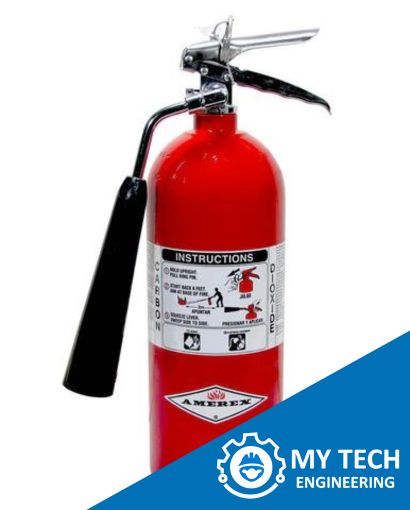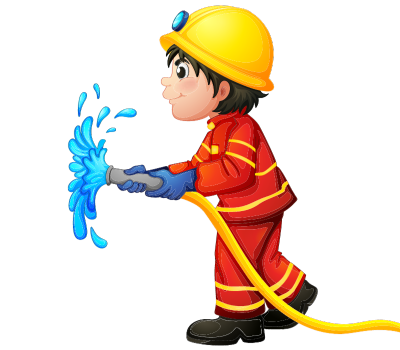Fire Extinguisher
Fire Extinguisher
A fire extinguisher is a portable device designed to control small fires by delivering an extinguishing agent to the fire source. It is an essential tool for fire safety and can be found in various settings, including homes, businesses, vehicles, and public spaces. Fire extinguishers are categorized based on the type of fire they are designed to extinguish, and the classification is typically indicated on the extinguisher itself.

Cylinder:
- Pressure Vessel: The outer shell of the extinguisher is a cylinder that contains the extinguishing agent under pressure. It is usually made of metal (such as steel or aluminum) to withstand the pressure.
Pressure Gauge:
- Indicator: Many fire extinguishers have a pressure gauge that indicates the pressure level of the extinguishing agent. This gauge helps users determine if the extinguisher is charged and ready for use.
Extinguishing Agent:
- Active Ingredient: The extinguishing agent is the substance that puts out the fire. Different types of fire extinguishers use different agents, such as water, foam, dry chemical powder, carbon dioxide (CO2), or specialized clean agents.
Nozzle or Discharge Horn:
- Delivery Mechanism: The nozzle or discharge horn directs the flow of the extinguishing agent toward the fire. Some nozzles are designed for specific types of agents to optimize their effectiveness.
Operating Lever:
- Activation: The operating lever is usually a handle that, when pressed, activates the extinguisher, releasing the extinguishing agent. Some extinguishers may also have safety features, such as a safety pin that needs to be removed before operation.
Classification Labels:
- Fire Classes: Fire extinguishers are classified based on the type of fire they are designed to extinguish. Common classes include Class A (ordinary combustibles), Class B (flammable liquids), Class C (electrical fires), Class D (flammable metals), and Class K (cooking oil and grease fires).
Mounting Bracket:
- Installation: Many fire extinguishers come with a mounting bracket for easy installation on walls or in designated locations. Proper placement is important for quick accessibility during an emergency.
Maintenance Tag:
- Inspection Record: A maintenance tag is often attached to the extinguisher, indicating when it was last inspected or serviced. Regular inspections are crucial to ensure the extinguisher’s reliability.
GET YOUR FREE CONSULTATION
My Tech offers a Wide variety of services to cater your problematic situations.










